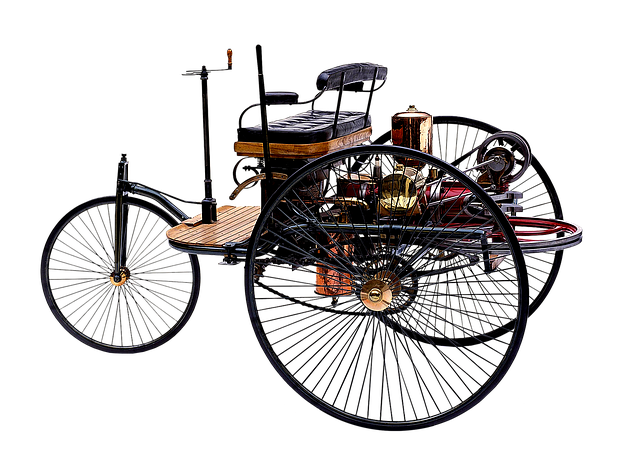Learn how to register your car in California with our comprehensive guide. Before you begin, understand the eligibility requirements for car registration in the Golden State. You’ll need specific documents for DMV VIN verification, ensuring your vehicle passes inspection and preparing all necessary paperwork.
We’ll walk you through the step-by-step process at the DMV, followed by post-registration tasks like insurance, tags, and maintenance to keep your California vehicle legal and on the road.
- Understand Eligibility Requirements for Car Registration in California
- Gather Necessary Documents for DMV VIN Verification
- Prepare Your Vehicle for Inspection and Registration
- Complete the DMV Registration Process Step-by-Step
- Post-Registration Tasks: Insurance, Tags, and Maintenance
Understand Eligibility Requirements for Car Registration in California

Before you begin the registration process, it’s crucial to understand the eligibility requirements for car registration in California. Your vehicle must meet certain criteria to be registered within the state. One essential step is ensuring your car has passed an emission test, which is typically conducted at a DMV-approved facility. Additionally, the Department of Motor Vehicles (DMV) requires a Vehicle Identification Number (VIN) verification to confirm the vehicle’s authenticity and history. This process, often facilitated by a mobile VIN inspection or a vin inspection service, checks for any outstanding issues, ensuring your car is safe and legal to operate.
To register your car in California, you’ll need to provide proof of ownership, insurance, and identification. A valid DMV form along with the appropriate fees will be required. If you’re using a mobile VIN verifier, ensure they are licensed and authorized by the DMV to streamline the verification process. This step is vital to avoid any legal complications and to demonstrate compliance with state regulations.
Gather Necessary Documents for DMV VIN Verification

Before heading to the California Department of Motor Vehicles (DMV) for registration, ensure you have all the required documents for a successful dmv vin verification. This process is crucial for establishing the vehicle’s identity and history. Gather the following:
1. The vehicle’s title, if applicable.
2. A valid driver’s license or state-issued ID card.
3. Proof of residency, such as a utility bill or lease agreement.
4. Your vehicle’s VIN inspection report from a certified inspector (this can be done by using a mobile vin verifier for convenience).
Prepare Your Vehicle for Inspection and Registration

Before heading to the California DMV for registration, ensure your vehicle is prepared for the inspection process. This includes having all required documents in order, such as proof of ownership and insurance. Additionally, your car must pass a safety and emissions test. The DMV conducts these inspections to verify that your vehicle meets the state’s safety standards, so it’s crucial to address any issues beforehand. A common step many California residents opt for is a mobile VIN inspection or using a mobile vin verifier to streamline this process from the comfort of their home.
During the inspection, the examiner will focus on key components like brakes, lights, horn, tires, and emissions control systems. They’ll also check the Vehicle Identification Number (VIN) to ensure it’s accurate and readable, which is essential for a successful registration. Proper preparation can make the registration process smoother, so take time to address any necessary repairs or maintenance before visiting the DMV.
Complete the DMV Registration Process Step-by-Step

To complete the DMV registration process for your car in California, follow these easy steps:
1. Gather all required documents, including your vehicle’s registration, proof of insurance, and valid driver’s license. Additionally, you’ll need the Vehicle Identification Number (VIN) from your car, which can be found on the vehicle’s title or by using a mobile VIN verifier or inspector to check the details online. The DMV will perform a VIN verification to ensure the vehicle matches the information provided.
2. Visit your nearest California DMV office or complete the registration process online through their official website. If you opt for an online registration, create an account and enter the required details, including your vehicle’s make, model, year, and VIN. After reviewing the information, submit the application, pay the registration fees, and schedule a time for a mobile vin inspection if needed. Ensure all data is accurate to avoid delays in the process.
Post-Registration Tasks: Insurance, Tags, and Maintenance

After successfully registering your vehicle with the DMV, there are a few key tasks to complete to ensure legal and safe operation. The first is acquiring appropriate insurance coverage, which is mandatory in California. You’ll need to choose a policy that meets state minimums and aligns with your personal needs. Many insurance providers offer convenient mobile apps for policyholders to manage their policies, including making payments and filing claims.
Additionally, you must obtain vehicle registration tags from the DMV or an authorized agent. These tags are essential not only for identification but also for displaying your vehicle’s year, make, and model. Another crucial aspect is regular maintenance. Consider using a mobile vin verifier or undergoing a mobile vin inspection to ensure your car meets safety standards. Regular oil changes, tire rotations, and brake inspections can significantly enhance your vehicle’s performance and longevity.
Registering a car in California involves several straightforward steps. By understanding eligibility requirements, gathering necessary documents for DMV VIN verification, preparing your vehicle, and completing the registration process, you can ensure a smooth transition into California’s road network. Remember to take care of post-registration tasks like insurance, tags, and regular maintenance to keep your vehicle compliant and safe on California’s roads.
